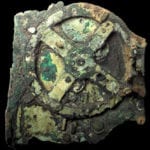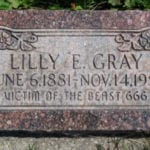 Weird Stuff
Weird Stuff  Weird Stuff
Weird Stuff  Mysteries
Mysteries 10 Tragic Disappearances and Deaths in Joshua Tree National Park
 History
History 10 Ways Childhood Really Sucked in the Old West
 Music
Music 10 Name Origins of Famous Bands from the 1990s
 Religion
Religion 10 Biggest Turnarounds by the Catholic Church
 Weird Stuff
Weird Stuff 10 Unbelievable Times Laws Had Unintended Consequences
 Humans
Humans Ten Historic Women Who Deserve Way More Credit Than They Got
 Movies and TV
Movies and TV 10 Films That Spawned Major Lawsuits
 History
History Ten Times Towns Were Wiped Off the Face of the Earth
 Creepy
Creepy 10 of the Most Disturbingly Haunted Public Houses in the UK
 Weird Stuff
Weird Stuff 10 Niche Subcultures That Are More Popular Than You Might Think
 Mysteries
Mysteries 10 Tragic Disappearances and Deaths in Joshua Tree National Park
 History
History 10 Ways Childhood Really Sucked in the Old West
Who's Behind Listverse?

Jamie Frater
Head Editor
Jamie founded Listverse due to an insatiable desire to share fascinating, obscure, and bizarre facts. He has been a guest speaker on numerous national radio and television stations and is a five time published author.
More About Us Music
Music 10 Name Origins of Famous Bands from the 1990s
 Religion
Religion 10 Biggest Turnarounds by the Catholic Church
 Weird Stuff
Weird Stuff 10 Unbelievable Times Laws Had Unintended Consequences
 Humans
Humans Ten Historic Women Who Deserve Way More Credit Than They Got
 Movies and TV
Movies and TV 10 Films That Spawned Major Lawsuits
 History
History Ten Times Towns Were Wiped Off the Face of the Earth
 Creepy
Creepy 10 of the Most Disturbingly Haunted Public Houses in the UK
10 Lucrative Ideas Sold For Almost Nothing
Regret—everyone suffers from it, but some suffer more deeply than others. Imagine creating what you think is a mundane product and selling it for a quick buck only to see it revolutionize the business and make millions of dollars for the lucky person who bought it. These people probably have more regrets than any of us will ever know.
10The Raven
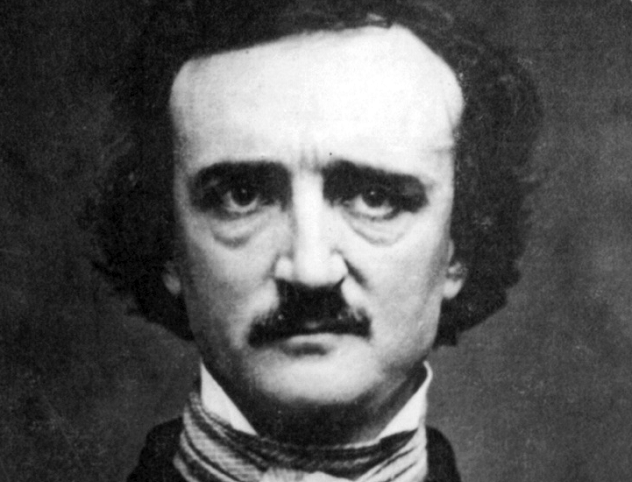 The Raven by Edgar Allen Poe tells the story of a man who is visited by the titular bird, which is the manifestation of the grief he suffers over a lost loved one. After first being rejected by his friend’s magazine, Poe sold the poem to The American Review, who published it in their February 1845 issue. He received $9 for it.
The Raven by Edgar Allen Poe tells the story of a man who is visited by the titular bird, which is the manifestation of the grief he suffers over a lost loved one. After first being rejected by his friend’s magazine, Poe sold the poem to The American Review, who published it in their February 1845 issue. He received $9 for it.
The poem garnered instant acclaim and notoriety. It was reprinted in periodicals all across the country and made Poe a household name. Today, The Raven stands as one of the most famous poems in the history of the written word. The amount of money it has generated from reprints, books, and even movies is incalculable, yet Poe was impoverished all his life and died nearly penniless. It is estimated that his lifetime earnings from professional writing was just $6,200, whereas one copy of his first book of poems sold for $662,500 in 2009.
See the hit film loosely based on Poe’s life and works, but with more John Cusack! Rent The Raven with Amazon Prime at Amazon.com!
9Safety Pins

Walter Hunt was a New York City mechanic and prolific inventor. He held patents for a fountain pen, knife sharpener, rifle, streetcar bell, stove, ice plow, sewing machine, street-sweeping machine, and nail-making machine, among many others.
To pay off a $15 debt to his friend, Hunt decided to invent something useful that he could quickly turn a profit on. One day, while fiddling with a 20-centimeter (8 in) piece of brass wire, it came to him. His idea was the safety pin—the first pin to have spring action and a clasp to protect the fingers.
Hunt filed the patent on April 10, 1849, which he later sold to W.R. Grace and Company for $400. With that, he paid off his friend, keeping the remaining $385 for himself. W.R. Grace and Company made millions off of the safety pin, as Hunt would have if he had kept a share of the rights.
8Sgt. Pepper’s Lonely Hearts Club Band Cover Art
 Sgt. Pepper’s Lonely Heart’s Club Band, the eighth studio album by The Beatles, featured a cover designed by well-known British pop artists Peter Blake and his wife Jann Haworth. The cover is essentially a collage of many notable historical figures standing with The Beatles in a faux band photo. These figures include Marilyn Monroe, Bob Dylan, Lenny Bruce, Albert Einstein, Marlon Brando, H.G. Wells, and coincidentally, Edgar Allan Poe. Blake and Haworth were each paid £100 (approximately $280 USD) for their services and received no royalties.
Sgt. Pepper’s Lonely Heart’s Club Band, the eighth studio album by The Beatles, featured a cover designed by well-known British pop artists Peter Blake and his wife Jann Haworth. The cover is essentially a collage of many notable historical figures standing with The Beatles in a faux band photo. These figures include Marilyn Monroe, Bob Dylan, Lenny Bruce, Albert Einstein, Marlon Brando, H.G. Wells, and coincidentally, Edgar Allan Poe. Blake and Haworth were each paid £100 (approximately $280 USD) for their services and received no royalties.
The album became legendary, and so did the cover. It sold an estimated 32 million copies worldwide, making it one of the best-selling albums of all time. It won Grammy Awards for Album of the Year and Best Album Cover, and both album and cover topped Rolling Stone “greatest” lists in their respective categories.
7Jell-O

In 1895, struggling cough syrup manufacturers Pearl and May Wait of Leroy, New York devised a formula to turn powdered gelatin into a tasty and commercially viable product when mixed with fruit-based syrups. The product was indeed tasty, at 88 percent sugar, and they named it “Jell-O,” a portmanteau of “jelly” combined with the era’s trend of ending a product name with an “-O.” They bought the long-unused patent for powdered gelatin from Peter Cooper, who invented the first American steam locomotive, and went into business.
The Waits were syrup experts but not marketers, so after years of unsuccessfully trying to commercialize Jell-O, they sold the full rights to their neighbor Frank Woodward for $450 in 1899. Under the wing of an accomplished businessman like Woodward and bolstered by an ingenious advertising campaign, Jell-O’s annual sales quickly rose to $250,000, reaching $1 million in 1906. In 2013, Jell-O sales amounted to nearly $500 million.
6The James Bond Theme Song
The James Bond theme song was originally composed by Monty Norman for the first Bond film, Dr. No, in 1962. Unsatisfied with the sound, the producers hired composer John Barry to rearrange the song. Barry, who was a successful recording artist with a unique instrumental band, added rock and jazz elements, making it more up-tempo. The result was a sharper, catchier, more electrifying song, which became the iconic tune we all know today.
Barry was paid a one-time fee of £250 (approximately $700 USD) for his work while Monty Norman, who received the writing credit, has accumulated well over $1 million in royalties. Many legal battles have since transpired over golden credit, with Norman emerging the victor every time. Despite Barry’s version being infinitely more well known, he hasn’t seen a cent from it since he was paid that small sum 42 years ago.
5Coca-Cola

Pharmacist John Pemberton created the first formula for Coca-Cola in 1886. The drink—then marketed as a brain and nerve tonic—began selling at a soda fountain in an Atlanta pharmacy that May. It cost $0.05 per glass and earned only $50 in its first year on the market.
Desperate for money, thanks in part to a crippling illness and morphine addiction, Pemberton sold his ownership of the drink to other investors for $1,484, most of which was an interest-free loan to be paid back with future profits. Those investors in turn sold their shares to shrewd businessman Asa Candler.
For $2,300, Candler became sole owner of Coca-Cola and the newly formed eponymous company. In 1888, just months after selling his shares, Pemberton died from stomach cancer. Candler ended up selling his shares in 1919—for $25 million, which is $341 million in today’s money.
4The Red Vineyard
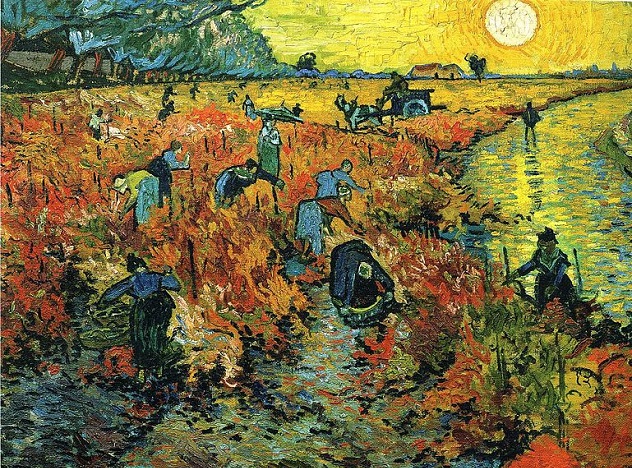 The Red Vineyard is an oil painting created by Vincent van Gogh in November 1888. It shows a group of harvesters working diligently under the luminosity of the sun. This painting has the distinction of being the only piece of work Van Gogh sold in his lifetime. It was bought by fellow painter Anna Boch at an art exhibit in Belgium in 1890. She paid 400 francs for it (approximately $1600 USD in today’s money).
The Red Vineyard is an oil painting created by Vincent van Gogh in November 1888. It shows a group of harvesters working diligently under the luminosity of the sun. This painting has the distinction of being the only piece of work Van Gogh sold in his lifetime. It was bought by fellow painter Anna Boch at an art exhibit in Belgium in 1890. She paid 400 francs for it (approximately $1600 USD in today’s money).
Much like Poe, Van Gogh lived and died tragically. He didn’t earn the acclaim he deserved until many years after his death, but that acclaim translated into millions of dollars for those who owned his work. His paintings are among the most valuable of any artist in history, with many selling for upward of $50 million. His most expensive painting, Portrait of Dr. Gachet, sold for a record-breaking $82.5 million in 1990 ($150 million in today’s money).
The Red Vineyard was sold by Boch for 10,000 francs—25 times what she paid—in 1906. The painting eventually ended up in the Pushkin Museum in Moscow. If it was available for sale, it’s possible that the previous price record for a Van Gogh painting might be broken.
3The Terminator
In the early ’80s, James Cameron was a struggling filmmaker with no money and no home, reduced to sleeping in his car and on friends’ couches. He had one movie to his name, a low-budget horror flop called Piranha II: The Spawning, which had not made him any significant money or given him legitimacy in the business. During this time, he had written a promising screenplay titled The Terminator, which he was shopping around in Hollywood.
Producers were willing to buy the script but would not let the unproven Cameron direct it—except Gale Anne Hurd at New World Pictures. She agreed to let him direct if he sold the full rights to her for only $1, which he grudgingly accepted. Cameron may have lost ownership of The Terminator, but that move paid dividends in credibility, as the success of the film enabled him to direct Aliens, Terminator 2, Titanic, and Avatar, becoming the highest-earning director in the world.
Despite rocky beginnings, the Terminator is now one of the most beloved franchises of all time. Buy the entire Terminator Anthology on Blu-Ray at Amazon.com!
2Venom (Spider-Man)
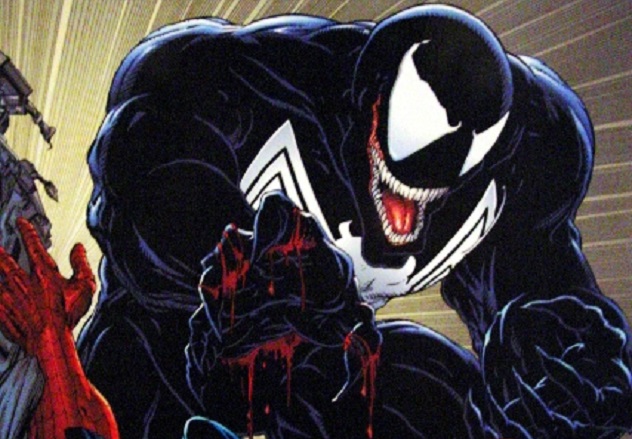
In 1982, a Spider-Man fan from Illinois named Randy Schueller took a stab at creating a story arc for an upcoming contest held by Marvel Comics. As an accessory to the story, Schueller designed a new costume for Spidey. It was all black, save for the emblem on the chest, a radical change from the traditional red and blue costume that had been used for 20 years. He submitted the idea and waited, hoping for a reply.
A few months later, he received a letter from Marvel editor-in-chief Jim Shooter, who liked the idea and wished to buy it—for $220. Schueller happily agreed to the deal. His story never went to print, but the costume did. It appeared in a May 1984 issue as an alien symbiote that bonded to its host in the form of the black suit. It was an instant hit with fans, so much so that Spider-Man was bound to the alien costume for the next four years. Eventually, the symbiote changed hosts and enveloped a journalist named Eddie Brock, who became the supervillain known as Venom.
The nightmarish character Venom is undoubtedly the most famous comic book villain conceived within the last 35 years. He has starred in his own series of comics and appeared on a plethora of merchandise. He has also been featured in video games, TV shows, and movies, including 2007’s blockbuster Spider-Man 3, which grossed nearly $900 million worldwide.
1The Call Of The Wild

Heavily inspired by his time as a prospector in the Klondike, Jack London penned The Call of the Wild, a story about a dog that is kidnapped from his suburban California home and made to drive a sled in the Yukon wilderness during the gold rush. It was first published in January 1903 as a serial in four issues of The Saturday Evening Post, who paid London $750 for the nonexclusive rights. Later that year, London sold the full rights to Macmillan Publishers for $2,000 to turn the story into a book. It was a substantial sum at the time, one that many writers could only fantasize about. The novel was released on July 1, 1903 for $1.50, selling 10,000 copies on its first day.
The book quickly became a classic, forever etched into the fabric of American culture, and made London one of the most well-known authors in history. By 1914, 500,000 copies had been sold in the US, and by 1964, that figure was six million. It sold millions overseas as well and has been translated into 48 languages. The novel has remained popular to this day. In the 100-plus years since its publication, it has never gone out of print. Having sold away his royalty rights, however, neither London nor his descendants ever saw a penny. He didn’t regret his decision, though—without Macmillan’s enormous promotional push, his career might never have taken off at all.






